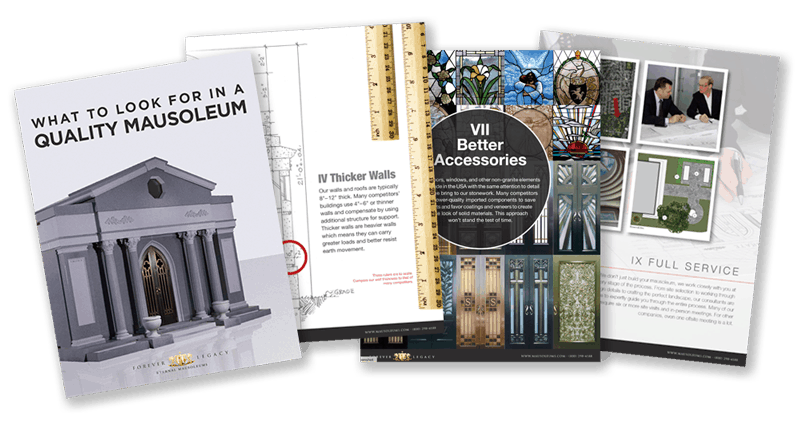Van Ness Parsons Mausoleum
Egyptian
American cemeteries often have a schizophrenic attitude towards Egyptian architecture. While almost all Egyptian architecture has something to do with death and the afterlife, thus making it a perfect fit for the cemetery, it’s pagan origin often raises the hackles of the religious community. Memorial designers often soften the pagan profile of Egyptian forms by adding Christian figures and symbols. The Van Ness Parsons mausoleum is a perfect example of this hybridization. Over the entrance to the mausoleum are vulture wings, a Egyptian symbol for maternal care, but that is softened by statues of an adoring sphinx gazing upon Jochebed holding her son Moses, while another statue portrays Jesus holding a lamb symbolizing innocence. Jesus is known as the Lamb of God. In the distance is another maternal figure that may be a representation of Pharaoh’s daughter finding Moses in the bulrushes, in Egypt.
The most noted occupant of the mausoleum is Albert Ross Parsons (1847-1933), a noted pianist and head of the piano department at the Metropolitan Conservatory of Music. More apropos to the mausoleum, Parsons was also an Egyptologist who wrote the book, New Light From the Great Pyramid: An astronomico-geographical system of the ancients recovered etc. in 1893. Also sharing space in the pyramid is Parsons’ wife Alice Schuyler Van Ness who died in 1931.
Text and photo © Douglas Keister Visit Doug’s Author Page
[address cemetery=”Green-Wood Cemetery” street=”Willow Avenue” city=”Brooklyn” state=”New York” zip=”11218″]

